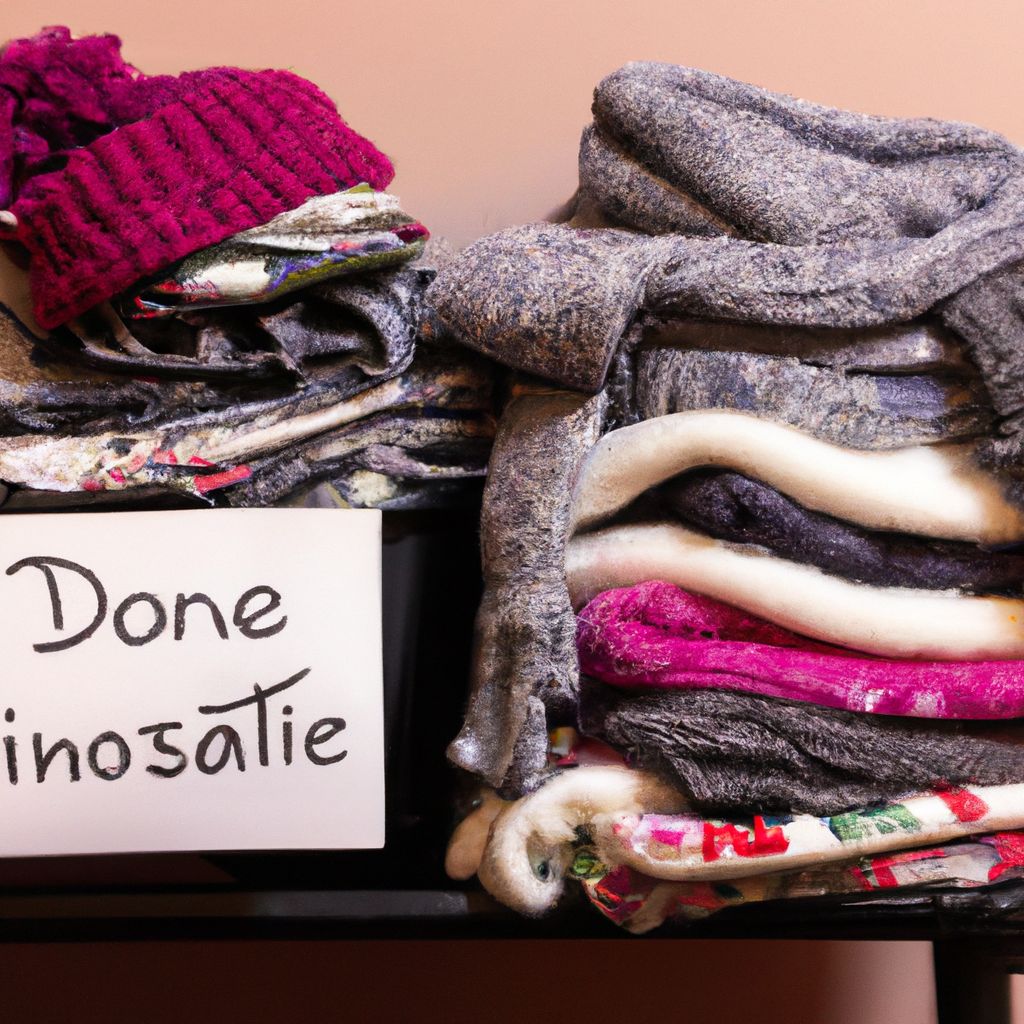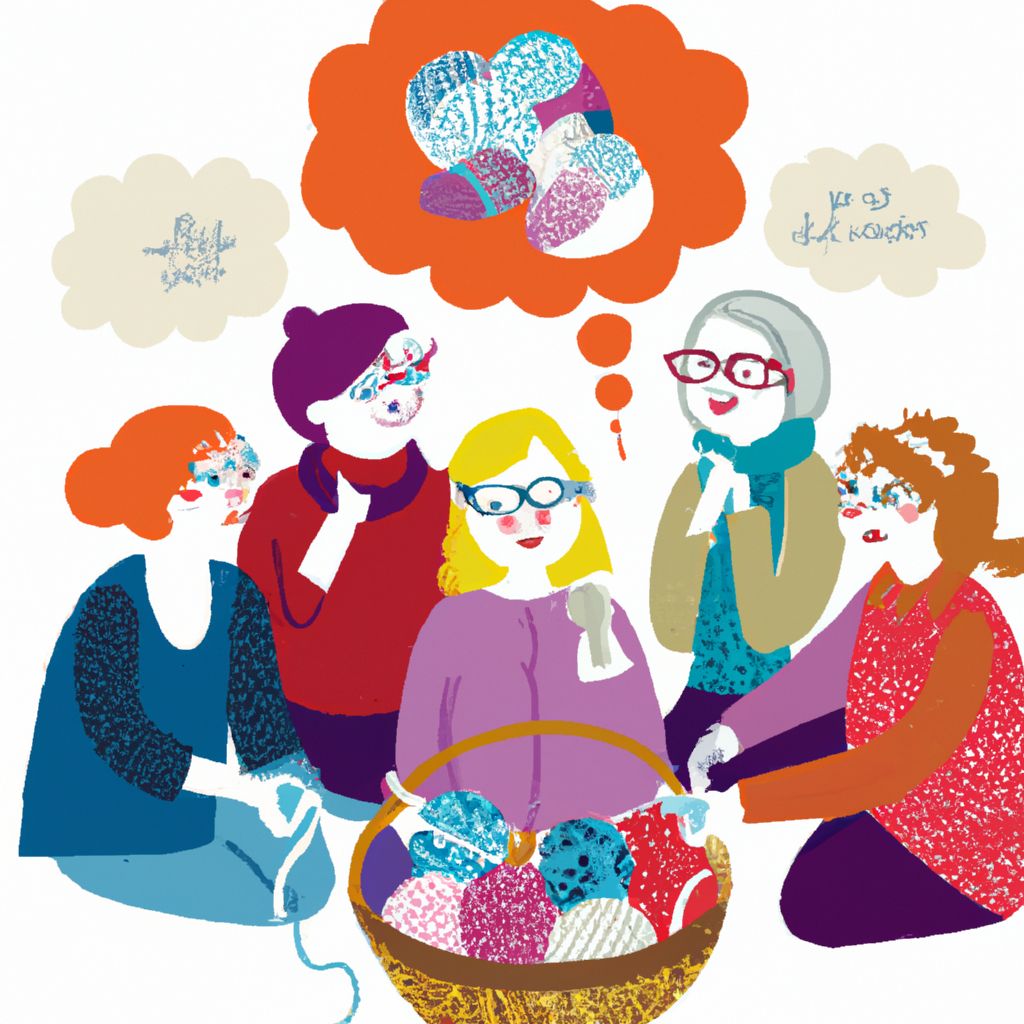- Understanding the Concept of Knitting for Charity
- Choosing the Right Charitable Organization
- What to Knit for Charity
- How to Prepare Your Knitted Items for Donation
- The Donating Process: Steps to Follow
- Knitting for Charity: Frequently Asked Questions
Understanding the Concept of Knitting for Charity

Knitting for charity is a wonderful initiative that brings together the love for knitting and the spirit of giving. It is a unique way to support those in need while engaging in a hobby that brings joy and satisfaction.
Charitable knitting has a significant impact on society. It allows individuals to make a positive contribution to the community, helping those in need with warm, hand-knitted items. It's a tangible way to show care and compassion to those going through tough times.
Donating your knitting to charity comes with a multitude of benefits. First, it offers an opportunity to improve your knitting skills. The more you knit, the better you get. Secondly, it provides a sense of fulfillment and happiness that comes from helping others. Lastly, it creates a sense of purpose and connection to a larger cause.
Choosing the Right Charitable Organization

When choosing a charity to donate your knitting to, there are several factors to consider. The first factor is the organization's mission. It's important to align your efforts with a cause you deeply care about. Whether it's supporting homeless shelters, hospitals, or animal shelters, make sure the organization's mission resonates with you.
Next, consider the type of knitted items the charity accepts. Some organizations may only accept specific items such as scarves, hats, or blankets. Always check the charity's guidelines before you start knitting.
Another important factor to consider is the charity's distribution process. Find out how your knitted items will be distributed to those in need. This will ensure that your efforts reach the intended recipients.
Lastly, the reputation of the charity matters. Make sure the organization is reputable and transparent about its operations and impact.
Here are a few reputable organizations that accept knitted donations:
- Project Linus - They accept handmade blankets for children who are ill, traumatized, or otherwise in need.
- Knitted Knockers - They provide special handmade breast prosthesis for women who have undergone mastectomies or other procedures to the breast.
- Binky Patrol - They accept all kinds of handmade blankets to comfort children and teens in need.
What to Knit for Charity

There is a wide variety of items that you can knit for charity. However, what you choose to knit should primarily be guided by the needs of the recipient organization. Here are some common items that many charities often need:
- Scarves: In colder climates, scarves are much needed to keep people warm during harsh winters.
- Blankets: Blankets are always in demand, especially for charities that support homeless shelters, hospitals, and disaster relief efforts.
- Hats: Knitted hats are essential for newborns, cancer patients, and individuals living in cold climates.
- Mittens and Socks: These small items are quick to knit and provide essential warmth.
- Baby Clothes: Many charities supporting low-income families or hospitals with neonatal units appreciate donations of knitted baby clothes.
Before you pick up your knitting needles, it's crucial to contact the charity organization and inquire about their current needs. This will ensure that your efforts are directed towards items that will be most beneficial.
How to Prepare Your Knitted Items for Donation

Once you've finished knitting your items, it's important to properly prepare them for donation to ensure they are ready for immediate use. Here are some steps to follow before donating your knitted items:
- Washing: The first step is to wash your knitted items. This ensures that they are clean and hygienic for the recipients. Use a gentle detergent and cool water to prevent any damage or shrinkage to your knitted items.
- Drying: After washing, thoroughly dry your items. It's best to air-dry them to maintain their shape and size. Make sure they are completely dry before packaging to prevent mildew.
- Labeling: It's helpful to attach a label or a note to each item indicating the size, materials used, and care instructions. This information can be crucial for the recipients and those distributing the items.
Preparing your knitted items for donation in this manner ensures they are safe, clean, and ready for use. It also shows a level of care and respect for the recipients of your knitted donations.
The Donating Process: Steps to Follow

Donating your knitted items involves a series of steps to ensure they reach the intended recipients safely and in good condition. Here's a step-by-step guide to the donating process:
- Packaging: Once your items are clean and dry, neatly fold them and pack them in a sturdy box or bag. If you're donating a variety of items, consider grouping similar items together for ease of sorting.
- Labeling: Clearly label the package with the charity's address. If you're shipping multiple boxes, number each box (e.g., 1 of 3, 2 of 3).
- Shipping: You can ship your package using any carrier that is convenient for you. Some charities may have drop-off locations or pick-up services, so check their donation guidelines.
To cut down on shipping costs, you can consider the following tips:
- Flat Rate Shipping: If you're in the U.S., USPS offers flat rate boxes that can be a cost-effective way to ship, especially for heavier packages.
- Group Donations: Coordinate with local knitting groups or clubs to pool donations and share the cost of shipping.
- Local Charities: Choose local charities where you can drop off donations in person to avoid shipping costs altogether.
Remember, always get a receipt for your donation. It is not only a confirmation of your contribution but also useful for tax deductions where applicable.
Knitting for Charity: Frequently Asked Questions

- Yes, many organizations accept yarn donations. This is especially useful for charities that work with volunteers who knit items on behalf of the organization. However, always check with the specific charity about their guidelines for yarn donations.
- Some charities provide specific patterns they'd like you to follow, while others are more flexible. It's important to check with the organization to understand their requirements. In most cases, simple patterns that can be completed quickly and are easy to care for are preferred.
- The type of yarn suitable for charity knitting largely depends on the intended recipients. For items intended for hospitals or shelters, it's best to use soft, hypoallergenic, and machine-washable yarns. Acrylic yarn is often a good choice due to its durability, ease of care, and affordability. However, always check with the charity to understand their specific needs and guidelines.








